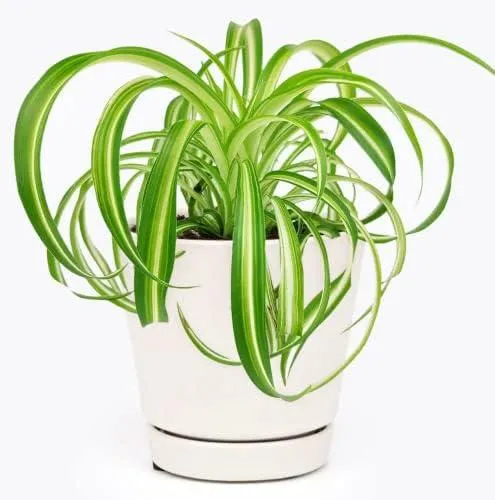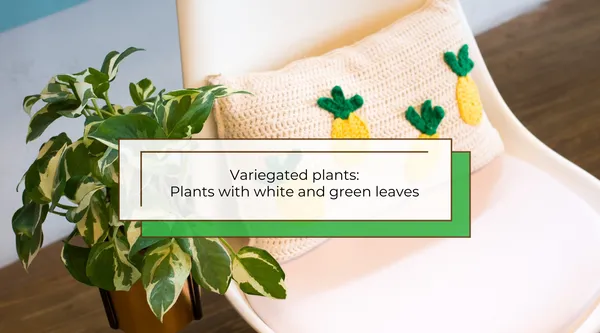A Guide to Adding Gorgeous Variegated Plants to Your Home
If you’re looking to brighten up your indoor spaces with some lovely low-maintenance greenery, variegated house plants should definitely be at the top of your list. With their striking color patterns, these plants can instantly make a design statement. In this article, I’ll discuss the top variegated plant options, their care requirements, and other useful tips to help you select and care for these beauties. Let’s get started!
What are Variegated Plants?
Variegation refers to the distinctive color patterns that occur naturally on some plant leaves, stems or flowers due to genetic mutations. On variegated plants, in addition to the typical green color, you’ll see splashes or splotches of white, cream, yellow or pink pigmentation. This gives them a unique, eye-catching appearance that makes them a favorite amongst plant lovers.
From an evolutionary standpoint, variegation may help some plants stand out to pollinators or deter herbivores looking for a snack. For us humans though, it’s just plain gorgeous to look at! Having a few variegated specimens will up the aesthetic value of any room in your home.
Popular Variegated Houseplant Choices
Here are some of the most common and easy-care variegated plants suitable for indoor growing:
- Philodendron: Varieties like birkin, brasil and selloum have leaves variegated in creamy white or yellow shades. Philodendrons are very hardy and thrive in low to medium light.
- Pothos: The iconic golden or marble queen pothos has heart shaped green leaves dappled with white. It’s one of the lowest maintenance variegated plants.
- Chinese evergreen: It comes in various variegated patterns like tri-color, white fusion etc. Chinese evergreen prefers bright indirect light and high humidity.
- Peperomia: Types like peperomia caperata ‘variegata’ and ‘rosso’ have green variegated leaves. They adapt well to a variety of light conditions.
- Monstera: The monstera adansonii and monstera deliciosa variegated cultivars are classics due to their big, luscious leaves speckled in white.
Those are some of the most popular and beautiful variegated plants for home interiors. Their striking foliage can beautify any space in your home from low to medium lighting conditions.

Care Requirements of Variegated Houseplants
While very hardy overall, variegated plants do have some unique care needs compared to their solid green counterparts:
- Light: They require brighter light to compensate for the loss of chlorophyll in variegated sections. South facing windows are ideal.
- Water: Under-watering is better than overwatering which can cause rot. Allow top soil layers to dry out between waterings.
- Fertilizer: Use a diluted liquid fertilizer monthly during growning season as variegated parts can’t produce as much food.
- Pruning: Remove non-variegated reverted sports or cuttings to encourage new variegated growth.
- Pest issues: May be slightly more prone so check regularly for pests like spider mites which find variegated parts tastier.
Provided their specific needs are met, variegated plants remain very low maintenance additions to your home. Their stripes and splotches more than make up for the extra TLC!
Tips for Arranging and Displaying Variegated Plants
Now that you know the top variegated plant picks and their care, here are some tips for showing them off beautifully in your home:
- Group in clusters: Place a few different variegated plant types together for a greater visual impact than solitary specimens.
- Use contrasting planters: Vary colored or patterned pots to make variegated leaves really stand out against the background.
- Accent furniture: Strategically position pots on side tables, bookcases, next to chairs for a unique pop of color.
- Hang or trail: Pothos and philodendrons look amazing cascading from wall planters or hanging baskets.
- Place in high traffic areas: Foyer, living room, staircases are ideal to enjoy these beauties daily.
With a bit of imagination, you can incorporate vibrant variegated plants throughout your home decor to liven up any space. They make for conversation starters and mood boosters on gloomy days.
Combating Plant Pests and Diseases
While generally tougher than their all-green kin, variegated plants can still face pest and disease issues on occasion. Here are some tips to prevent and handle common problems:

- Check regularly: Inspect leaves, stems and undersides weekly for signs of pests like mites, aphids or disease.
- Isolate infected plants: Immediately separate any plant showing signs of pests or disease to avoid spread.
- Use natural sprays: Neem oil, insecticidal soaps work well as organic pesticides. Repeated applications may be needed.
- Treat root rot fast: Overwatered variegated plants often succumb more quickly to root rot. Remove and treat affected parts ASAP.
- Control environment: Maintain proper conditions to reduce pest/disease stress- warm, humid, well-lit areas.
With some common sense precautions, you can enjoy your variegated beauties for many happy, pest-free years indoors. Early detection plays a big role in their winning battles against unwelcome invaders.
Dealing with Reversion and Other Challenges
While extremely appealing, variegated cultivars do come with some potential drawbacks:
- Reversion: Some variegated lines may revert back to all-green over time, needing to be discarded. Cuttings help retain variegation.
- Slower growth: Due to chlorophyll deficiencies, they grow more slowly than solid green plants. Extra care and time aids thriving growth.
- Higher prices: Rarer or newly developed variegated cultivars can demand premium prices from retailers.
- Light requirements: Their unique needs for adequate, indirect bright light pose challenges in deep interiors with low natural light.
While variegation adds layers of charm, it’s also a genetic instability that may give some plants personalities needing extra TLC. But for most gardeners, their rainbow leaf patterns are worth the slight challenges.
Frequently Asked Questions about Variegated Houseplants
Here are answers to some common questions people have when choosing variegated plants:
- Are variegated plants harder to care for? Generally no, provided you meet their specific light and watering needs. They retain much of the toughness of normal foliage.
- Which room is best for displaying variegated plants? South facing windows in the living room or home office tend to work great. Bathrooms can also be nice due to humidity.
-
How do I keep variegation stable over generations?</
Variegated House Plants Care Guide

Plant Watering Needs Light Requirements Coloring Size Chinese evergreen Allow soil to dry slightly between waterings Bright indirect light Variegated leaves in crème and green Slow growing to 2-3 feet tall and wide Dieffenbachia Let soil dry out partially before watering again Low to medium light White veins or splotches on dark green leaves Moderate size up to 4 feet tall Peperomia Water when top inch of soil is dry Bright indirect light White marbling or stripes on green or red leaves Small and compact up to 1-2 feet tall Pothos Let soil dry slightly before watering Low to bright indirect light Yellow or white variegation on heart shaped green leaves Vigorous vines can grow over 20 feet long Philodendron Water when topsoil becomes dry Medium to bright indirect light Cream or white edges or patches on leaves Moderate size climbing vines or bushes up to 6 feet tall FAQ
-
What kinds of plants can get variegated foliage?
Lots of house plants can have variegated leaves. Some popular options are pothos, philodendron, spider plants, monstera and peace lilies. However, snake plants and Chinese evergreens may also display variegation sometimes.
-
How does variegation happen in plants?
Variegation occurs due to a genetic mutation that causes sections of a leaf to not produce chlorophyll. As a result, those areas remain white or yellow rather than turning green. Strangely enough, these parts are still alive! They get their energy from the green parts of the leaf through a process called translocation. Scientists are still unsure exactly what causes the mutations.
-
Do variegated plants need extra care?
Kinda, variegated plants require mostly the same growing conditions as their solid green counterparts. Perhaps the only difference is they might grow a bit slower since some leaf areas can’t photosynthesize. You’ll also want to keep them in bright, indirect light to stop the white parts from fading. Otherwise, water and fertilize just like normal.
-
Why are variegated plants more expensive?
Because the variegation trait doesn’t always pass reliably to new growth, maintaining variegated plants takes careful propagation. Nurseries basically gotta cross their fingers each time! Due to less reliable multiplying, variagated plant stock stays more limited. So in a way, you’re paying for the botanical lottery win. At the same time, their unusual leaf patterns also make variegated plants a status symbol of sorts.
-
Can I get a plant to develop variegation?
Not really, variegation is caused by genetic mutations that happen naturally. You can’t force it. However, stressing regular green plants with things like extreme temperatures or lack of light may possibly trigger some variegation to appear in new growth, but no guarantees. It’s far easier to just buy a plant already displaying the trait.

-
Is the white or yellow part of variegated leaves dangerous to pets?
That’s a good question cause you wouldn’t want Fluffy nibbling toxic plants. Fortunately, the non-green parts of variegated leaves seem to be perfectly safe for pets despite containing no chlorophyll. They don’t produce any harmful chemicals. Still, it’s probably wise to variegated-proof just in case, since some housepets love to chew plants!
-
